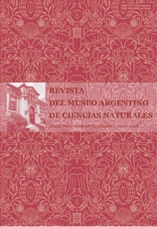Incidencia de aspectos naturales y antrópicos en los anegamientos de la ciudad de Buenos Aires
Resumen
Incidence of Natural and Anthropic Aspects in the Floods of Buenos Aires City. Floods in
Buenos Aires city are the regions most severe environmental problem. They cause economic losses and a strong
impact on the populations daily life. Historical flood citys data is essential for the development of hydrologic
models and for structural and non structural environmental decisions. This paper presents a detailed register of
flood events occurred in Buenos Aires city between 1980 and 2005. During this period, 148 events took place, from
which 29 were extreme flood events. From the total events a 61.5% was caused by rainfall and a 38.5% by
sudestadas (strong southeastern winds). Results show that geomorphology and flood frequency records are
related: neighborhoods placed over the Estuarine Plain and Flood Plain show the highest values, whereas those
placed over the Interfluves and Laterals show the lowest flood frequency values. Information gathered shows that
anthropic aspects, as the presence of Villas and green spaces, cause biased results related to the sources that
register flood events. The need of developing hydraulic models, which should consider the sudestada phenomenon,
and the importance of regular controls carried on by appropriated organisms which register accurate information,
are pointed.
Buenos Aires city are the regions most severe environmental problem. They cause economic losses and a strong
impact on the populations daily life. Historical flood citys data is essential for the development of hydrologic
models and for structural and non structural environmental decisions. This paper presents a detailed register of
flood events occurred in Buenos Aires city between 1980 and 2005. During this period, 148 events took place, from
which 29 were extreme flood events. From the total events a 61.5% was caused by rainfall and a 38.5% by
sudestadas (strong southeastern winds). Results show that geomorphology and flood frequency records are
related: neighborhoods placed over the Estuarine Plain and Flood Plain show the highest values, whereas those
placed over the Interfluves and Laterals show the lowest flood frequency values. Information gathered shows that
anthropic aspects, as the presence of Villas and green spaces, cause biased results related to the sources that
register flood events. The need of developing hydraulic models, which should consider the sudestada phenomenon,
and the importance of regular controls carried on by appropriated organisms which register accurate information,
are pointed.
Texto completo:
PDFEnlaces refback
- No hay ningún enlace refback.

This work is licensed under a Creative Commons Attribution 3.0 License.

